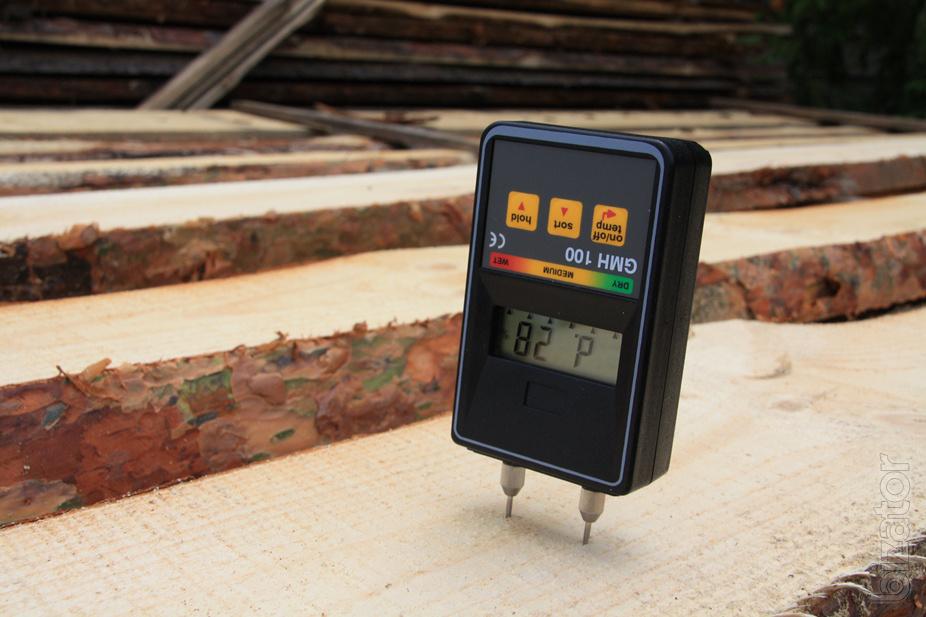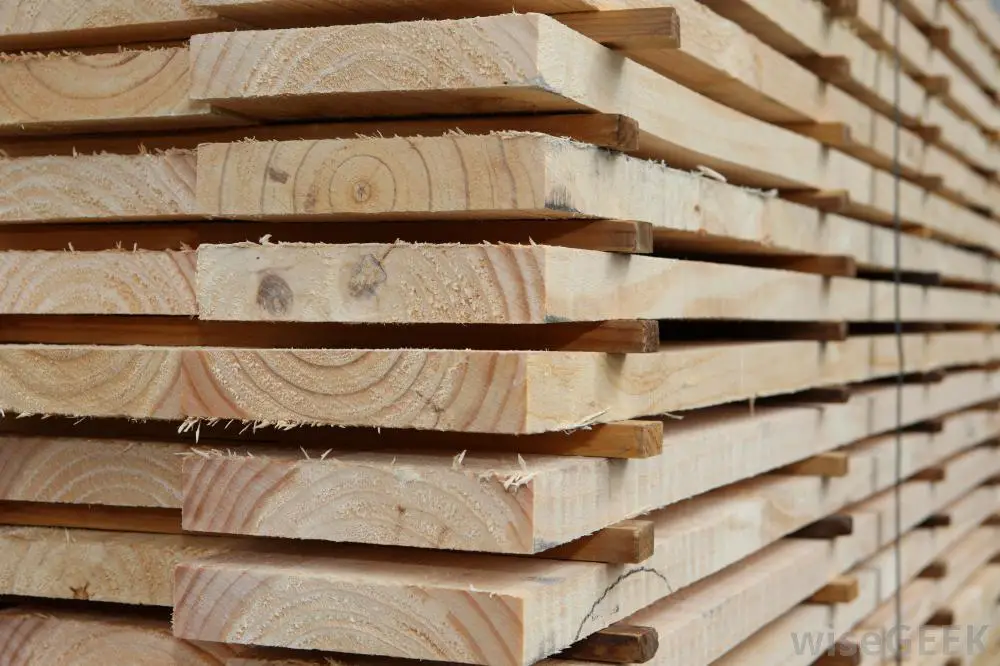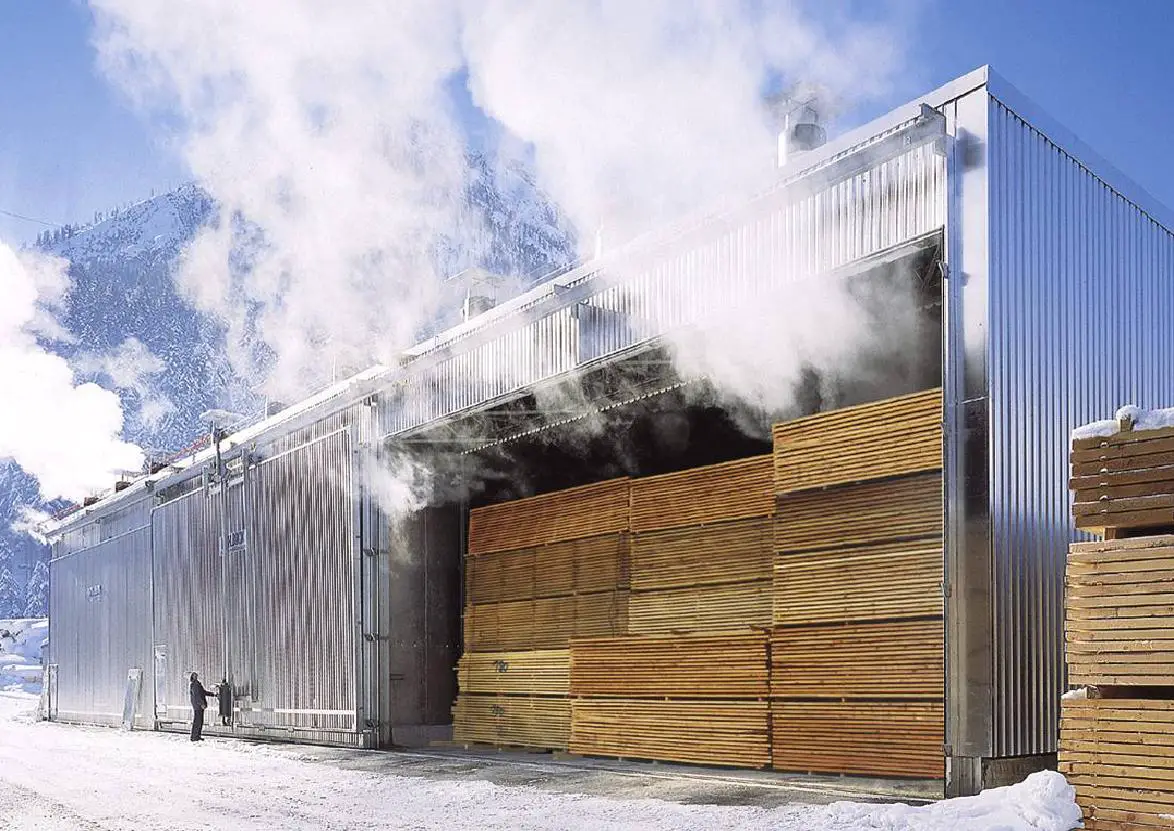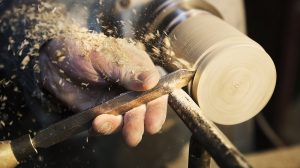The wood for furniture, doors, windows, flooring, paneling, musical instruments, etc., must first be dried to an equilibrium moisture content. The moisture content of wood is different depending on what is to be made of it: for furniture and wood used indoors it is in the range 8-12%, for musical instruments it is lower, 6%, and for outdoor use higher, 14-16%. It is measured with a hygrometer. The problem with not observing these values is that very often the consequences are not immediately visible in the factory, when something can still be done, but later, when the wood in its various forms is already in our homes.

In the past, drying was done naturally, boards cut from logs were stacked with spaces between the rows so that air could circulate. Drying took at least 9 months, during which time the wood was rained on, beaten by the sun and wind, and the water was slowly removed without shocks, resulting in good quality dry wood. The wood could be stacked for years, and the longer it was stacked, the more dimensionally stable it became. Even today, wood is still dried in this way and there are companies and people who work only with this type of wood.

The industry's growing need for raw materials has made the time needed for natural drying too long. This has given rise to artificial drying in high-performance dryers, which reproduce the principle of natural wood drying, but greatly reduce the time. There are different drying cycles depending on the nature, thickness and subsequent use of the wood, which are transposed into diagrams that must be followed exactly in order to eliminate the occurrence of tensions in the wood, or dimensional variations.


Wood that has not been thoroughly dried and has not reached equilibrium is greatly influenced by variations in temperature and humidity in the atmosphere. Too high humidity can lead to veneer peeling, changes in the color of the veneer, whitening or peeling of the varnish film.
When wood moisture is high, the stresses that occur in the wood as a result of large variations in temperature and humidity can lead to highly visible cracks in the wood. Sometimes cracks can appear on the surface of the lake. They should be analyzed more closely before you can paint the lake. If the wood is solid and the cracks are parallel to the grain of the wood, it is very likely that the problem is the high moisture content of the wood. The possibility of cracks is higher the harder the varnish is, the less elastic it is (polyurethane varnish).
The dimensional variation of wood due to moisture is particularly noticeable in long objects such as doors and windows. They can warp so much that they can close with difficulty or not close at all. The area where incorrect drying of wood is most visible and has the most unpleasant consequences is flooring (parquet, wood flooring). If the wood has not been properly dried after installation, the wood moves, causing swelling or shrinkage of the floor. In both cases, the floor must be refinished.
For the above reasons the moisture content of the wood must be respected. In order to avoid problems, I recommend that firms which do not dry their own timber should invest in a good quality hygrometer.

































Good evening,
I need help too.
I have an entrance door, which faces south, so it faces the sun.
The door has a structure / frame on which are placed 3 panels, made of pine, panels made of, say, glued planks.
The problem is that these panels twist over time quite a lot.
Is it because the wood was not dried well, or should I use a harder wood?
Thank you.
Sorin
Good evening.
Wood, especially exterior wood, varies dimensionally over time due to moisture variation. If the wood has been dried to equilibrium these variations are not very large. If they are disturbed, it means that the wood has not been well dried. Sometimes the way the wood has been cut combined with too much or too little moisture can lead to significant warping.
All the best!
Hello,
We have an interior wooden staircase made by us, from beams, not special stair treads. It creaks quite a bit - do you think anything can be done with an oil? Or should it be changed?
Thank you!
Hello.
In general, the creaks in the stair treads are due to the way of fastening and to the fact that the wood, over time, changes its dimensions and no longer has the same position in the fastening system, resulting in friction. Oil will not stop it from creaking.
All the best!
Good evening,
I finished roofing the house last week and would like to ask when I can insulate the attic with mineral wool. The wood was raw, but sitting in the draught and under the sun-heated board (Ilfov county) I could see that it was starting to show signs of drying out. How long should I leave it to avoid the risk of mould?
Good evening!
It would be good if you could find a moisture meter somewhere and check the internal humidity of the wood. If it's below 18% it's fine, you won't have any problems. A few months is quite a few for natural drying of the wood, even if the space is ventilated. Normally wood needs 1 year for every 2,5 cm thickness + another year. If the wood has high internal moisture (because it dries faster on the surface), this water will escape over time. If the wood is insulated and the moisture cannot circulate, it condenses and mould can appear.
In attics, lofts, the heat is high and the wood dries faster, but it needs moisture to escape. Insulation can prevent this.
All the best!
[...] winter) but also if there are major losses at certain points. Don't forget to measure the moisture content of the wood, as the foam can come off if the wood is [...]
Hello. I have a post of resinous wood, 5 cm thick and humidity of approx 18%.Can I use the wood inside, for the ceiling? Or is there a risk that the posts will spread once they are knocked down? What is the minimum moisture content that the wood must reach to avoid cracking when used indoors? Thank you...
Hello!
The humidity is far too high for the wood to be used indoors. In this case its humidity should be between 8 and 12%.
The moisture content of the wood is directly related to the humidity inside, which should ideally be around 60% and not less than 40%.
At 18%, the wood will continue to dry inside and the elements will spread out. They will also be helped by the heat that builds up above, which will make drying quick. As a result, stresses in the wood can occur and lead to warping or cracking.
Bunaziua,
It is possible, please, to call a certain "hygrometer". In addition, the name of this device differs from store to store - for example, eMag calls it a "moisture meter".
Good evening!
Yes, you find it easier as a moisture meter. Search for "professional wood moisture meter". Some examples: LG43NG or HIT 3 from KENOBI, NDI20 FELDER, General Tools MMD7NP (Cole-Palmer), Bosch UniversalHumid or those from emag.